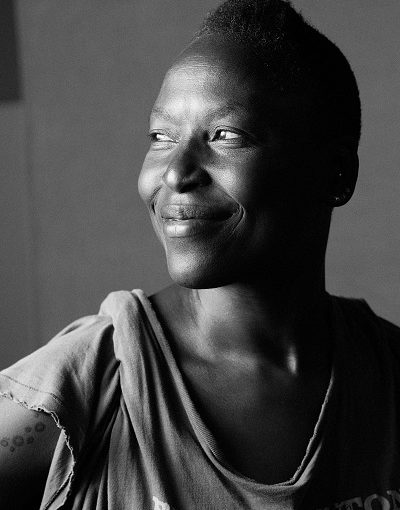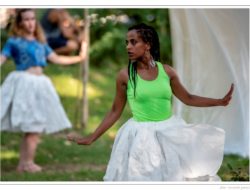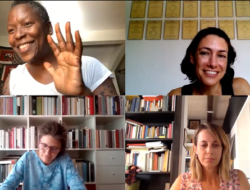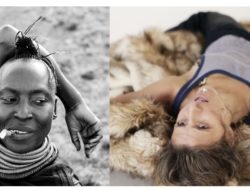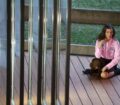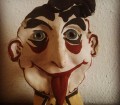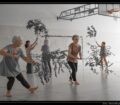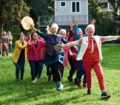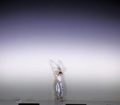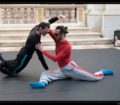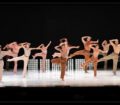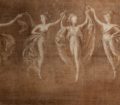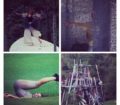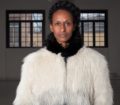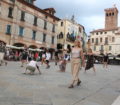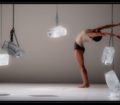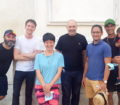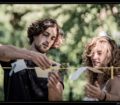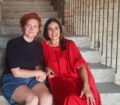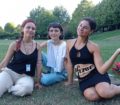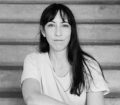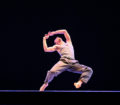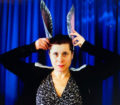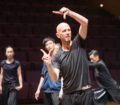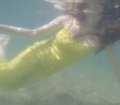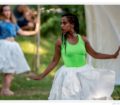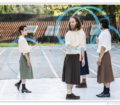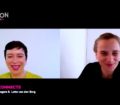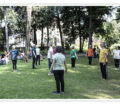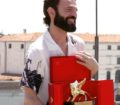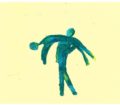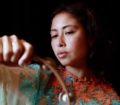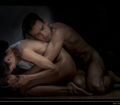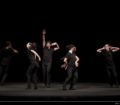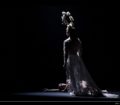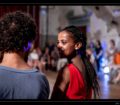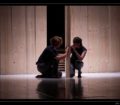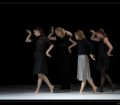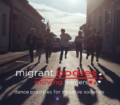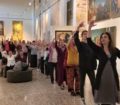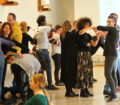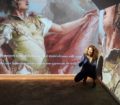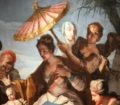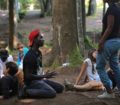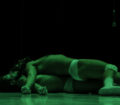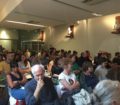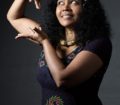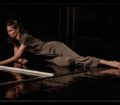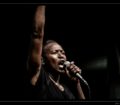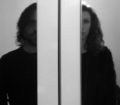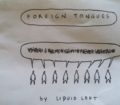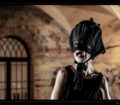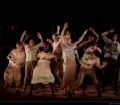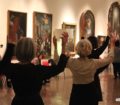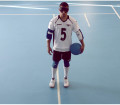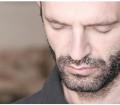SEGUE INTERVISTA IN ITALIANO
You can’t remain indifferent to Nora – African, Zimbabwese, Shona, Chipaumire – etiher you are taking a class with her, listening to her clear mind, or watching her comprehensive performances. We’ve decided to meet her again, together with the photographer Sara Lando, during her Residency in Bassano del Grappa. Let’s discover a little bit more on Nora Chipaumire and her artistic life.
You led two morning practices in the past days, but we felt a shift from one day to the other.
My practice is called NHAKA (inheritance), and it’s difficult to disengage from it, go to other things and then come back. Especially if you are new to it, you really have to commit to it. My practice is sacred and complete, it’s a way to compose yourself in relationship to the world. I felt it weird to practice it during discussion panels.
How can it be done?
It’s good to know the people you are taking class with, not just considering them as stars or whatever. You sense who they are, you know what they are doing, and then you avoid the bullshit. I try to be really alive in the world, to see what’s happening around me and sense everything.
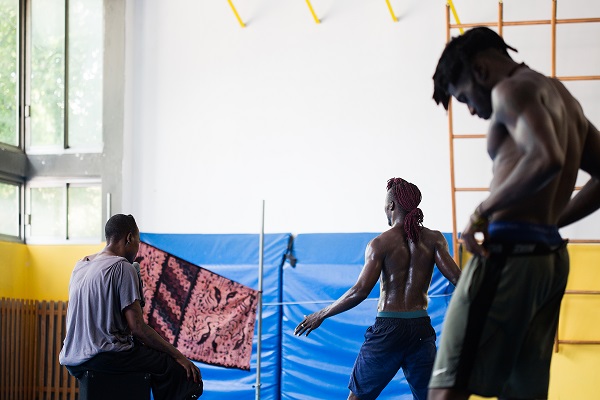
Nora Chipaumire, rehearsal | ph Sara Lando
How do you choose the people to work with?
I don’t audition. You recognize the person, and say “ok this is what I’m in search of”. For example the two guys here (Shamar Watt and Aleva Ndavogo) were both my students at some point, and they were very available. They are young, they are creators, they are thinkers. It’s a rite of passage, then they must go and do their own work. I don’t say “be like me” because they can’t, and I don’t want them to be copycats like in so many dance forms.
How do you deal with the Western perspective?
In a Western sense you would say that my work is one of a kind, it is what is, it doesn’t respect anything that had been in the past. But this is what I am. I come from a not industrial culture, where you have to search the best of who you are, what’s valuable.
I know that my feet are in two different realities. It is an advantage to have access to more than one perspective, even if one has been imposed. Nonetheless I have it, so I just stop quarrelling and accept it. “How do I use it” seems the only intelligent thing to do. Personally I’ve never had issues about who I was or if I belong to anything. This is what I am, so simple.
Which are our responsibility toward the future?
I think that we do have responsibility, as people who use the body, to imagine a healthier and stronger body. We have the responsibility to be a healthy species and we must project that into our future, and we must think about it now. And holistically. Everything has to be healthy, also spiritually and emotionally, for people coming after me. Well-beings produce well-beings.
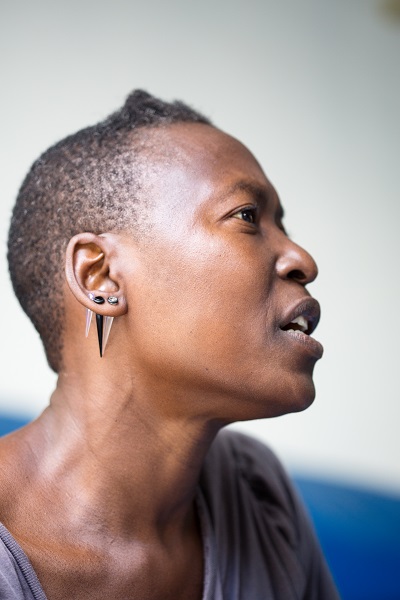
Nora Chipaumire | ph Sara Lando
The quest for happiness.
This all question in life of pursuing liberty and happiness. You have to actually do it, and it will keep generating itself. Every day I’m in pursue of heath on every level, not just physical, I want emotional health, spiritual health. It’s super important, I cannot do the work unless I’m happy. The spirit needs to feel that the body is a happy place. To get there is probably hard, stronger and brutal, but it’s still coming from a place of joy.
Happiness with teeth!
Perhaps this has to do with being in a black skin, where you’re confronting with a kind of stress all the time. But happiness is a real thing, and then you have to fight for it. Every day I look forward to get up and do this work. That’s why I’m never tired. Maybe bored to talk to a Europe that doesn’t listen, but not tired.
Can doing, and being an example, be easier than talking?
That’s what Jesus and all Messiah do. They just do the things, and then it’s clear to others that that’s the way. This is the work we have to do. This all quest for beauty, aesthetics, why we shape our body in all kind of different lines… to bring this pleasure, to bring this joy. It’s very infectious. Then of course we also disagree, we are creatures that need stimulation all the time. So disagree strongly, a healthy disagreement is beautiful.
What is dance?
In Shona, if you say you’re in searching for culture, you find dance inside. But if you say that you’re in searching for dance in itself, they think you’re looking for classroom dance, exercises. It’s something ok to run your energy, but dance is not something that comes from the outside. Dance is something you are born with, it’s your inheritance, your birth right, your sound. You only have to find what can bring your dance out.
You often use the expression “living art”, instead of dance.
There is no separation between art and a personhood. Humanity is art, and art comes out from your humanity. Nhaka, again. Also the word “living” is assuming that there is something that is also dead. Are you alive? The work is to make yourself a better person, and then your art is better.
Last night you presented #PUNK. How was this work born?
#PUNK is inspired by Patti Smith’s famously/infamously Rock N Roll Nigger. So a great deal of tension around someone who has white skin, calling herself a nigger. But I completely agree with her, because a nigger, for me, is that which is made to produce, and never gets compensation or acknowledgement. So all of us can be nigger, it’s not really a question of race.
#PUNK is part of a trilogy related to important women.
All three parts are inspired by female artists, women who take ownership of their body, and do their work without compromise. The other two are 100% POP, inspired by Grace Jones, and the power of Pop music of giving access to proper words that can easily fit revolutionary messages under your skin. And * NIGGA, inspired by Rit Nzele, a young woman completely unknown, except among the circle of Congolese Rumba. She’s an animator, she brings life to everything, and I was interested on how people who haven’t so much visibility can have a great impact on you.
You have stressed the different sound of each of them.
Yes, each one of them lives in a certain sound or vibration that is different. It was important to me to address to how our body responds very differently, and vibrates to different stimulation. All three of them (punk, pop, rumba) are sounds that are inherently related to resistance, but at the same time are cultivating a different kind of possibility.
Questions from Lara Crippa and Sara Lando
Photo credits Sara Lando
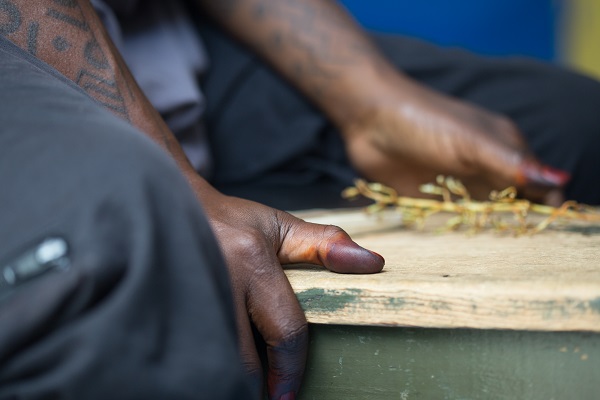
Nora Chipaumire, hands | ph Sara Lando
Non si può restare indifferenti a Nora – Africana, Zimbawese, Shona, Chipaumire – non importa che si faccia lezione con lei, si ascolti il suo nitido pensiero, o si assista ad una sua performance. L’abbiamo incontrata nuovamente durante la sua residenza in Bassano, insieme alla fotografa Sara Lando per scoprire qualcosa in più sulla sua impattante vita artistica.
In questi giorni hai condotto due pratiche di danza, ma si è percepito un mutamento da un giorno all’altro.
La mia pratica si chiama NHAKA (eredità), ed è difficile scollegarsi, fare altro, e poi tornarvi. Serve dedizione, specialmente se non la si conosce, . È una pratica sacra e completa, è un modo di ricomporsi in relazione al mondo. Mi ha fatto strano praticarla durante delle giornate di confronto.
Qual è la modalità corretta?
Bisogna sapere con chi fai lezione, non basta che siano persone famose. Bisogna sentire chi sono, sapere cosa fanno, così da evitare balle. Io provo ad essere realmente viva nel mondo, così da vedere cosa accade intorno a me e sentire ogni cosa.
Come scegli le persone con cui lavorare?
Niente audizioni. Riconosci la persona e dici, “ecco cosa sto cercando”. Per esempio i due ragazzi qui, (Shamar Watt e Aleva Ndavogo) sono stati miei studenti in momenti diversi, ma erano estremamente disponibili. Sono giovani, creativi, pensatori. È un rito di passaggio, poi devono andare a fare il loro lavoro. Non dico “sii come me” perché non è possibile, e non voglio delle copie come avviene spesso nella danza.

Nora Chipaumire, rehearsal | ph Sara Lando
Come affronti la prospettiva Occidentale?
In termini occidentali il mio lavoro si direbbe unico nel suo genere perchè non rispetta ciò che è già stato fatto. Ma questo è ciò che sono. Provengo da una cultura non industriale, dove bisogna cercare il meglio di ciò che siamo, ciò che ha valore. So di avere i piedi in due staffe. È un vantaggio poter accedere a prospettive diverse, anche se una è stata imposta. Comunque sia è così, quindi smetto di litigarci e lo accetto. “Come utilizzarle” credo sia l’unica cosa intelligente da fare. Sinceramente non mi sono mai posta domande su chi sono o a cosa appartengo. Semplicemente questo è ciò che sono.
Quali sono le nostre responsabilità per il futuro?
In quanto persone che utilizzano un corpo, siamo responsabili di immaginarne uno più forte e più sano. Abbiamo la responsabilità di essere una specie sana e proiettarla nel futuro. E bisogna farlo ora, e in modo olistico. Tutto deve essere sano, anche a livello spirituale ed emozionale, per le persone che ci succederanno. Esseri che stanno bene generano esseri che stanno bene.
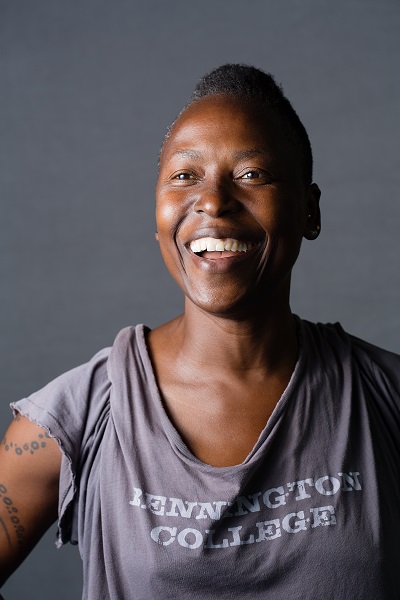
Nora Chipaumire | ph Sara Lando
La ricerca della felicità.
Tutta questa questione di inseguire la libertà e la felicità nella vita. Bisogna farlo, e continuerà ad autogenerarsi. Ogni giorno perseguo la salute a tutti i livelli, non solo fisico. Voglio salute emotiva e spirituale. È estremamente importante. Non posso lavorare se non sono felice. Lo spirito deve sentire che il corpo è un luogo felice. Non è facile arrivarci, può essere duro, difficile e brutale, ma deve comunque provenire da un luogo di gioia.
Sembra una felicità con i denti!
Forse ha a che fare con il ritrovarsi in una pelle nera, dove ci si deve confrontare continuamente con un certo stress. Ma la felicità è concreta, e bisogna lottare per essa. Ogni giorno non vedo l’ora di alzarmi e lavorarci. Non sono mai stanca o affaticata. Forse solo annoiata di parlare ad un’Europa che non ascolta.
Agire, ed essere da esempio, può essere più semplice che parlare?
Gesù, e tutti i Messia, hanno semplicemente agito, ed era evidente che quella era la strada. Su questo bisogna lavorare. Tutta questa ricerca di bellezza, di estetica, di dare forme al corpo… è per portare gioia e piacere. È contagioso. Poi ci sono ovviamente anche i disaccordi, siamo creature che necessitano continuamente di stimoli. Ma allora che sia un disaccordo evidente, un sano e bellissimo disaccordo.
Che posto occupa la danza?
In Shona, se dici che sei alla ricerca di cultura, vi troverai la danza. Ma se dici che sei alla ricerca della danza in se stessa, probabilmente sei alla ricerca di una lezione con esercizi. Che va bene per far scorrere l’energia, ma la danza non proviene dall’esterno. Nasciamo con la danza, è la nostra eredità, il nostro diritto di nascita, il nostro suono personale. Bisogna solo trovarla e farla uscire.
Al posto di danza, preferisci utilizzare l’espressione “arte vivente”.
Non c’è separazione tra a arte e personalità. L’umanità è arte, e l’arte proviene dalla nostra umanità. Di nuovo, l’intraducibile Nhaka. Inoltre la parola “vivente” presuppone che ci sia anche qualcosa di morto. Sei vivo? Il lavoro deve renderti una persona migliore, e allora anche la tua arte sarà migliore.
In questi giorni è anche stata presentata la performance #PUNK. Com’è nata?
#PUNK si inspira a Patti Smith e al più o meno famoso Rock N Roll Nigger. Quindi moltissima attenzione su un bianco che si dichiara negro. Ma concordo pienamente con lei, perché per me un negro è ciò che viene considerato solo per produrre, senza ricevere mai compenso o riconoscimento. Quindi ciascuno può essere negro, non è una questione di razza.
#PUNK fa parte di una trilogia su donne importanti.
Sono tre pezzi ispirati ad artiste, donne che si sono impossessate del loro corpo, e hanno fatto il loro lavoro senza compromessi. Gli altri due sono 100% POP, su Grace Jones e il potere della musica pop di dare accesso a facili parole che possono trasmettere messaggi rivoluzionari sottopelle. E * NIGGA, su Rit Nzele, una giovane donna quasi sconosciuta tranne nell’ambito della Rumba Congolese. È un’animatrice, nel senso che dà vita a qualunque cosa. Mi interessava come persone che non hanno una grande visibilità, possano ugualmente avere un grande impatto su di noi.
Ognuna di loro risponde a un ritmo.
Sì, ciascuna di queste donne vive in un suono specifico e vibra in modo diverso. Era importante per me rivolgersi al corpo e a come risponde in modo diverso e vibra in base alle diverse stimolazioni. Punk, pop, e rumba sono suoni intrinsecamente collegati alla resistenza, ma coltivano anche una diversa possibilità.
Domande di Lara Crippa e Sara Lando
Servizio fotografico di Sara Lando
Tags: #migrantbodies, artist interview, Nora Chipaumire, profile of an artist



